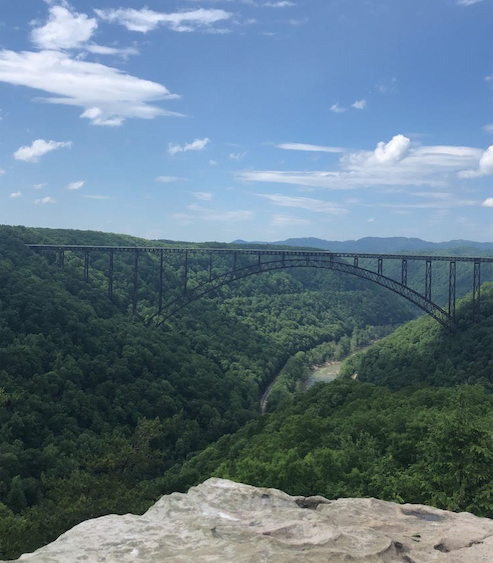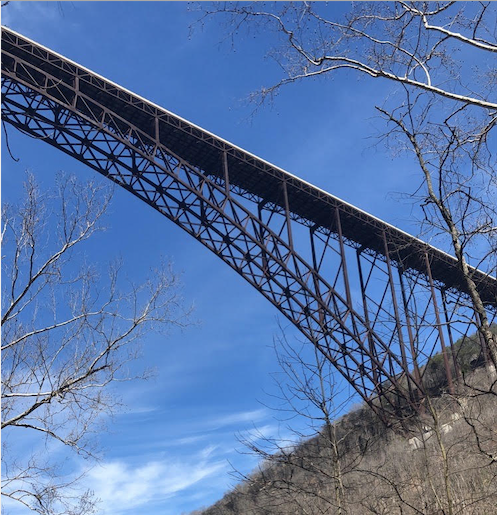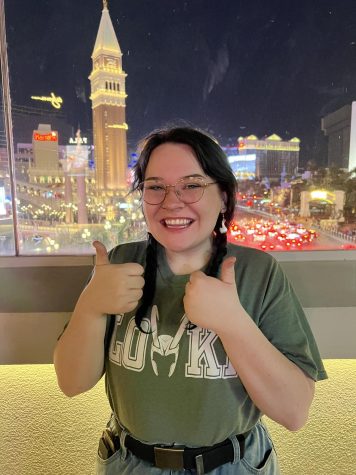Escaping the Opioid Epidemic

The landscape West Virginia, the epicenter of the opioid epidemic.
Jan 27, 2021
The small state of West Virginia is mainly known for two things: coal and the opioid epidemic. Whenever I tell strangers from other regions where I am from, those are the topics that come up most. I am questioned as to how I have all of my teeth because “it seems no one from West Virginia has all of their incisors,” or I get sympathy since “it must be so difficult to live in such a poverty-stricken and stereotyped area.” People ask how my neighbors and I survive on food stamps when the drug crisis has stripped away our tax dollars and left our wells of community nourishment bare. They state I am lucky to have “turned out the way I have” because West Virginia is a curse that clings to a person like a leech for the rest of their natural history; sucking all of their potential dry.
However, I am not one to argue: between the economic hardship and the homemade methamphetamine labs in every neighborhood, their prejudices are seemingly correct.
With the mining industry being slowly phased out of existence in the state, drug usage has risen astronomically as residents turn to them in such dark and desperate times. They cannot leave because they were laid off. They cannot call for help because it seems everyone else in our community is in the same rut. Naturally, people turn to the only escape they can find: narcotics.
Even children and teenagers know this harsh reality. In my old high school, around 5% of students were certain they would leave the state and find opportunities in another locality. (This is the same percentage that does not rely on free or reduced lunch for their meals on a daily basis). All others simply fell between the cracks, stating they would find an occupation nearby after graduation —if they even made it there.
But many of my previous classmates had already fallen into the trap of drug abuse like their parents while they were in high school. Drug addiction is such a prevalent issue that no one bothers to discuss it anymore. It hangs over the community like a cloud. You pray to God it goes away, but it never does.

On a daily basis, articles litter local newspapers about drug-related deaths, whether they are overdoses or deals that became fatal. People are no longer phased by the lethal repercussions of these substances. We accept it as a normal part of our lives. Addiction and drug use have warped many West Virginians’ perspectives. Some see the pills as a facet of their being.
Opinions from outsiders still sting, but it is even more painful to realize that your own acquaintances and fellow citizens have accepted these prejudices.
Rather than letting these notions define me, I try to use them to fuel my fire. Many people in my hometown do not have college degrees or even high school diplomas because of their struggles with addiction. We have been told our entire lives that the educational system is corrupt, and we should expect to live off governmental sustenance for the rest of our days. We were told that no university would accept someone from our area because “it just doesn’t happen around here.”. We have been hazed and forced to accept that every person in a professional environment will see us as “drug-addicted and stupid coal miners.”
I want to prove everyone wrong who has ever had a misconception about West Virginia. Our citizens have so much more potential than we even realize ourselves. I want to show the world that someone who lived in a town that rested below the poverty line can still create change like waves in an ocean. I want our region to rise from the ashes of every abandoned coal mine like a phoenix. I want to reveal that something much more fiery can come out of our tiny, dying state.












